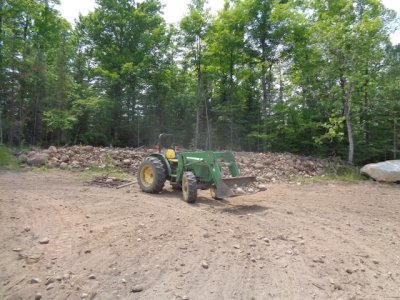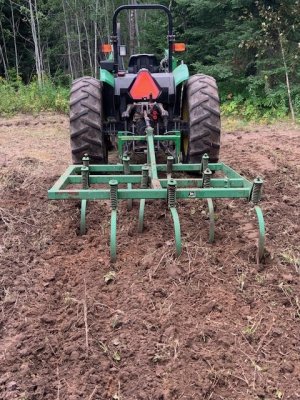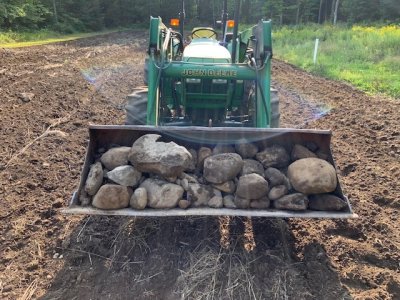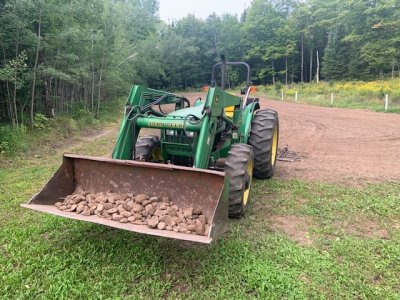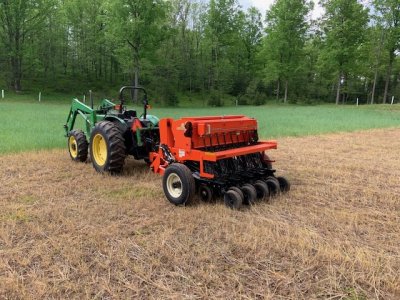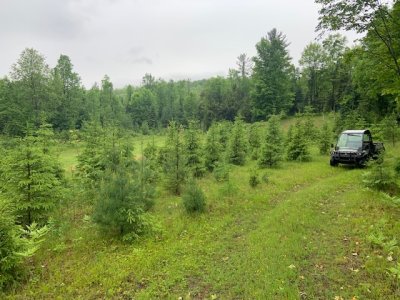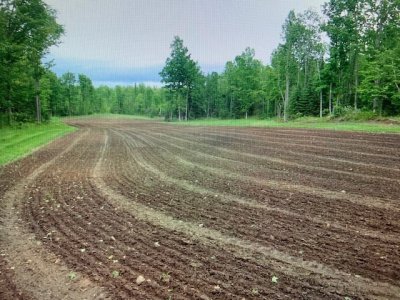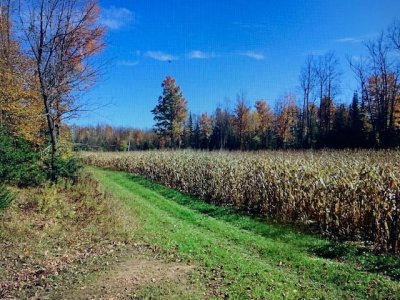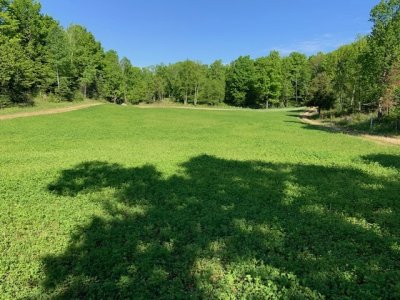We have just been fortunate enough to purchase a new piece of ground this week. The property is mostly wooded with a small opening here and there and some nice trails.
The largest open section on the property is a big open flat. Back in the day I don't know if was used as a log landing, or a construction area for a powerline that cuts through, but the characteristics of it are- sparse, non desirable herbaceous and "grass" very rocky, appears to be shallow. It's also ridge top. The area is rocky in general, and this is particularly rocky for whatever reason. The soil seems to either have been scraped or packed, however the historical topo's do show that it's always been a flat area, so i don't think its been majorly excavated.
The thing is, if I could get anything to grow here, it would be a fantastic destination food source. I have started working a few properties from scratch, but never with a plot like this- obviously shallow, rocky and low in nutrients. It may have even had the top soil scraped off, or at least packed.
So my question is, what is the process for- getting this section to where I can plant some kind of food source for deer and turkey, and what kind of plants are best suited here. I'm in this for the long haul, and may not get it planted this year, so I am willing to go at it as a process, but I also dont want to wait any longer than I have to.
I also have a plow, disc and tiller, but I'm a little concerned about the rocks on the disc and tiller especially.
This is in Western KY- Zone 7a.
Thanks in advance for any help.
The largest open section on the property is a big open flat. Back in the day I don't know if was used as a log landing, or a construction area for a powerline that cuts through, but the characteristics of it are- sparse, non desirable herbaceous and "grass" very rocky, appears to be shallow. It's also ridge top. The area is rocky in general, and this is particularly rocky for whatever reason. The soil seems to either have been scraped or packed, however the historical topo's do show that it's always been a flat area, so i don't think its been majorly excavated.
The thing is, if I could get anything to grow here, it would be a fantastic destination food source. I have started working a few properties from scratch, but never with a plot like this- obviously shallow, rocky and low in nutrients. It may have even had the top soil scraped off, or at least packed.
So my question is, what is the process for- getting this section to where I can plant some kind of food source for deer and turkey, and what kind of plants are best suited here. I'm in this for the long haul, and may not get it planted this year, so I am willing to go at it as a process, but I also dont want to wait any longer than I have to.
I also have a plow, disc and tiller, but I'm a little concerned about the rocks on the disc and tiller especially.
This is in Western KY- Zone 7a.
Thanks in advance for any help.

